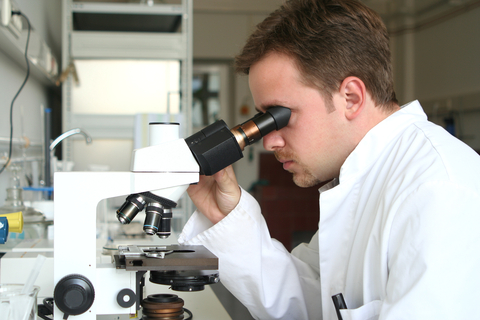New way to help nerve regeneration in spinal cord injury

A new way of triggering nerve regeneration to help repair spinal cord injury and in the longer term potentially paralysis has successfully been demonstrated by University of Bristol scientists. The work is published in PLOS ONE.
There is currently no cure for spinal cord injury or treatment to help nerve regeneration so therapies offering intervention are limited. People with severe spinal cord injuries can remain paralysed for life and this is often accompanied by incontinence.
The University of Bristol reports a team led by Dr Liang-Fong Wong and Dr Nicolas Granger from its Faculty of Health Sciences has successfully transplanted genetically modified cells that secrete a treatment molecule shown to be effective at removing the scar following spinal cord damage. The scar in the damaged spinal cord typically limits recovery by blocking nerve regrowth.
Previous work by the team proved olfactory ensheathing cells, which are taken from the “smell system” where they regenerate and repair throughout life to maintain sense of smell, could be genetically modified to secrete a treatment enzyme known as chondroitinase ABC (ChABC). This treatment enzyme is key in breaking down the glial scar at the injury point of the spinal cord and helping to promote nerve regrowth.
However, while previous studies have shown ChABC to be effective at promoting nerve regrowth when injected in experimental models of spinal cord injury as a drug treatment, it degrades rapidly at body temperature and repeated administration may be required to maintain efficacy.
In this study, researchers combined both treatments to treat rodents with spinal cord injury with genetically modified olfactory ensheathing cells to express ChABC. Following transplantation of the cells in rodent models the team were able to demonstrate the successful secretion of ChABC enzyme and removal of some of the glial scar. This led to increased nerve sprouting in the spinal cord, suggestive of successful nerve regeneration following the treatment.
The study provides an important proof of concept that this cell transplant strategy is a viable method to deliver this key ChABC enzyme in a rodent model of spinal cord injury and could be potentially used to allow the cells to be more efficient at repairing the spinal cord.
Dr Liang-Fong Wong, from Bristol Medical School, said “While these initial results look promising, in order to determine the longer-term survival of our genetically modified cells and assess functional recovery, such as recovery of walking or recovery of continence, we need to carry out further studies to test these cell transplants in more chronic injury models.”
Dr Nicolas Granger, from the Bristol Veterinary School, said “Taking this therapy further, for example by applying it to companion dogs that are naturally affected by spinal cord injury and remained paralysed, could help improve recovery of walking in these dogs in the longer term and pave the way for this approach to be applied to human spinal cord injuries.”
The work was funded by grants from the Wellcome Trust, the Biotechnology and Biological Sciences Research Council (BBSRC) and the University of Bristol’s Elizabeth Blackwell Institute for Health Research.








